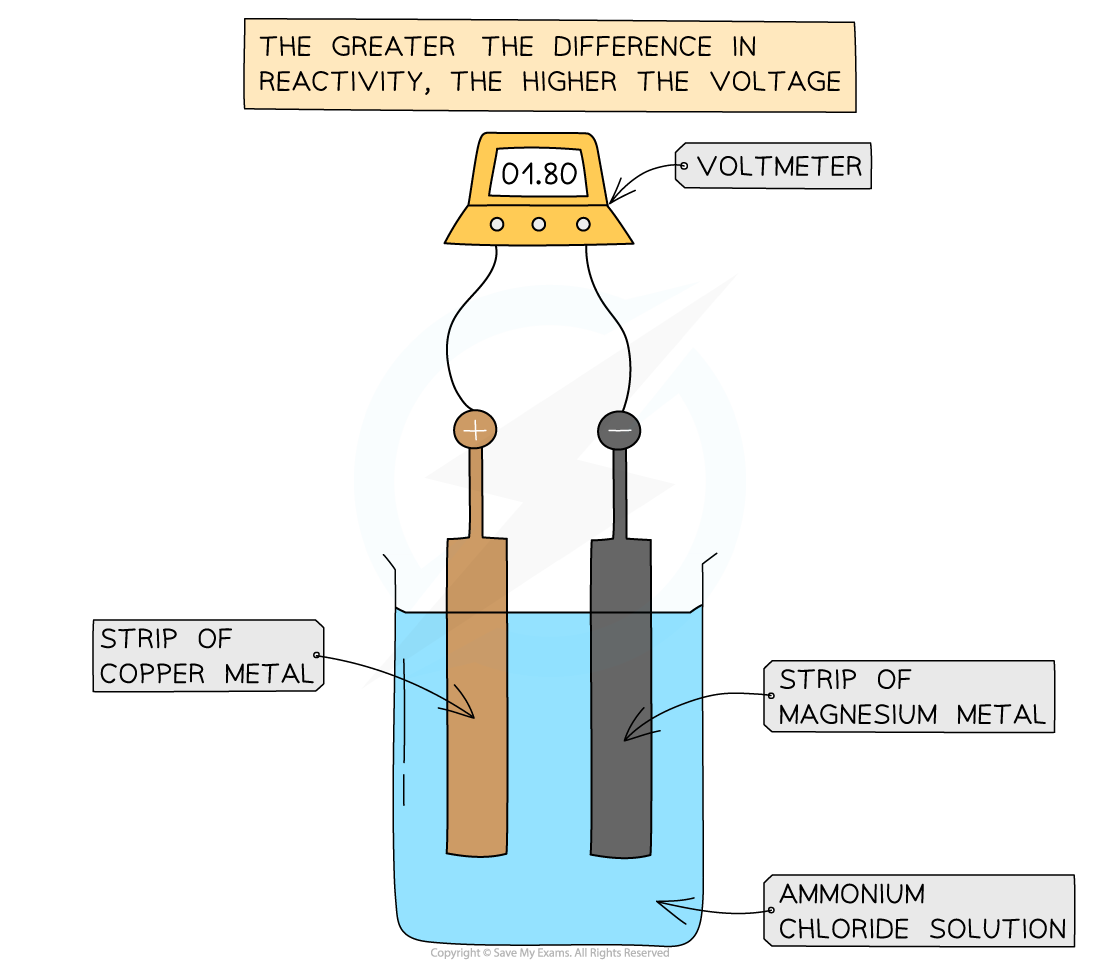- 翰林提供学术活动、国际课程、科研项目一站式留学背景提升服务!
- 400 888 0080
IB DP Physics: SL复习笔记5.3.1 Primary & Secondary Cells
Primary & Secondary Cells
Simple Cells
- A simple cell is a source of electrical energy
- The simplest design consists of two electrodes made from metals of different reactivity immersed in an electrolyte and connected to an external voltmeter by wire, creating a complete circuit
- A common example is zinc and copper
- Zinc is the more reactive metal and forms ions more easily, readily releasing electrons
- The electrons give the more reactive electrode a negative charge and sets up a charge difference between the electrodes
- The electrons then flow around the circuit to the copper electrode which is now the more positive electrode
- The difference in the ability of the electrodes to release electrons causes a voltage to be produced
- The greater the difference in the metals reactivity then the greater the voltage produced
- The electrolyte used also affects the voltage as different ions react with the electrodes in different ways


Simple cell made with Cu and Mg. These metals are further apart on the reactivity series than Cu and Zn and produce a greater voltage
Batteries
- Electrochemical cells include the familiar batteries used in everyday appliances and cars
- Batteries work by connecting two or more cells in series, which combine to give a larger overall voltage
- Over time the electrodes degrade as the reactions that occur there are irreversible
- Cells produce a voltage only until one of the reactants is used up and when this occurs the battery dies or goes flat
- The products formed cannot be reverted back into reactants as the reaction is irreversible and the battery must be replaced
- This happens in non-rechargeable batteries such as alkaline batteries
- In rechargeable batteries the reactions are reversed by connecting the cells to an external electrical supply
- This reverses the chemical reactions taking place allowing the cycle to be repeated
Primary Cells
- Cells that are non-rechargeable are known as primary cells
- Primary cells include AA batteries (known as dry-cells) common in many small devices
- Primary cells are by definition only able to be used once as the chemicals within them are used up
- During normal operation of a primary cell, the electrons flow from the negative plate to the positive plate of the cell
Secondary Cells
- Cells that are rechargeable are known as secondary cells
- Secondary cells include:
- Lithium-ion batteries used in laptops and other larger modern devices
- Lead-acid batteries such as those used in cars and other motor vehicles
- Secondary cells include:
- Secondary cells can be used many times as they are attached to a charger and the chemical reaction is reversed allowing the cells to store energy for use once again
- When recharging a secondary cell, the electrons are forced from the positive plate to the negative plate by an external current
转载自savemyexams

早鸟钜惠!翰林2025暑期班课上线

最新发布
© 2025. All Rights Reserved. 沪ICP备2023009024号-1








